

|
|
The B13 Sentra as we know it was sold in the United States and Canada 1991-1994. In Japan, 1990 was the first year of production for the home-market version, the Sunny. Just as the B13 was sold there a year earlier, the next generation B14 Sunny replaced it in the 1994 model year. The B13 sedan is still being sold in much of Latin America as the Tsuru, going strong over a decade after it was first introduced. Even without the SE-R coupe trim, the B13 is a solid, economical car in a clean, simple three-box design. Attainability and plentiful parts can explain its continued popularity worldwide, even as police cars and taxis.
Japan:

The B13 Sunny was available with engines ranging from the underwhelming carbie 1.3L GA13DS (left) to the 1.8L SR18DE (right), a sister engine to the SR20. The SR18DE differs from the SR20DE in that it has a narrower bore (82.5mm versus 86mm) and higher compression.All Japanese Sunny sedans were four-doors, but there were a number of exterior trim configurations not available in America. Japan's hottest B13 Sunny was the 1800 GT-S saloon, with four-wheel disk brakes, limited-slip differential (likely the same as the VLSD B13 SE-R unit), stiffer suspension, and sport interior. The GT-S is as uncommon as our SE-R, but it was obviously the model to have. It's SR18DE put out 138hp at 6400rpm and 123ft-lb of torque at 4800rpm, numbers not far off the USDM SR20DE.
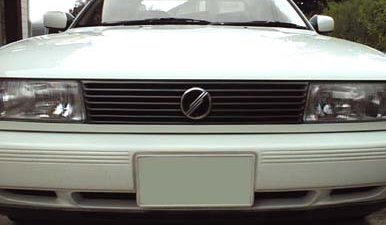 Photo from Sunny Side of Rex (JP). |
This 1991 Sunny 1500 saloon shows the character "S" emblem on the grill, taking the place of the Nissan logo found on other B13s. The Sunny had its own special badge until the 1992 update, making it desirable among "JDM" nuts. The front bumper is like a pinched version of the American cover - not a trick of the photograph. Both look similar, so you wonder why there were two different versions? The above car differs in more ways: body-colored side mirrors (a power folding mechanism was available), the antennae mounted on the rear fender rather than the front, and a burgundy interior (not offered in North America).Speaking of interiors:
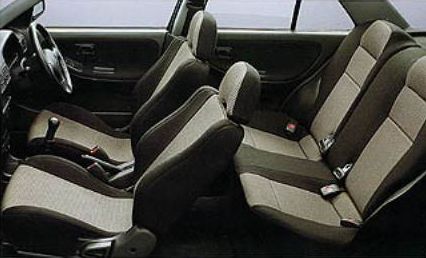
The white-on-black cloth of this Sunny GT-S is much sportier than you'll find in a North American Sentra four-door. What's cool: three-spoke steering wheel, black cloth door inserts, and NX2000 seats.
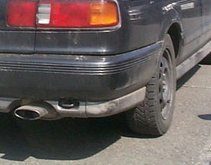 |
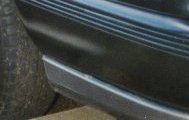
Photo from 3PO'S Factory (JP). |
Shown above are the subtle side skirts found on earlier Sunnys. They might be a nice touch for a 1991-1992 SE-R to match the silver-grey front lip of the front bumper if someone could import a set.
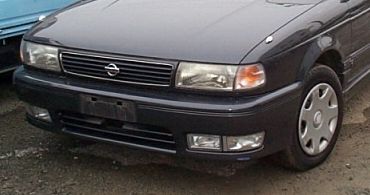 |
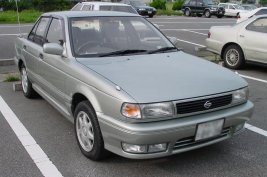
Sunny SuperSaloon photo from Go Sign site (JP). |
During the 1992-1993 Sunny mid-life update, some models received a very classy front bumper with cues similar to the Infiniti I30 sedan. Cars with this front bumper also carry very slick side skirts, and I'm sure I'm not the only one who would like to get ahold of these pieces.Update: This page was originally made in summer 2001. Since then B13 Sunny front bumpers, headlights, grilles, and side skirts have become a popular swap for American Sentra drivers.
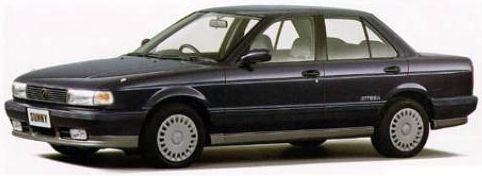
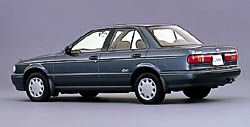 |
Here's something to excite the armchair tuners: the Sunny with ATTESA AWD (note the lettering on the rear doors), which was available on both GA15DS and SR18DE Sunnys. If the drivetrain will bolt to a SR-family engine and a B13, we have to wonder - who's the eccentric that will build the first AWD SE-R and end the newbie threads on the SE-R forums?
|
| Mexico:
The Sentra SE-R wasn't exclusive to the United States. Mexico's Tsuru 2000 GSR was indentical to the American SE-R, except for minor details like badging on the doors, a roof-mounted antennae, and no side marker signals on the bumper. The 2000 GSR was produced through 1995, and is as popular in Mexican amateur motorsports as the SE-R is in the U.S.
The Tsuru is still sold in Latin America, something of interest to Classic owners. No hot SR20DE version is offered, but a 2001 facelift bought a revised grill and headlight combination, which can be purchased separately. See the December 2001 issue of Nissan Performance Magazine for more information on the 2001-2004 update. For 2005, Tsurus adopted the Nissan corporate "tooth" (photo by Sato, GSRMx on SR20Forum). |
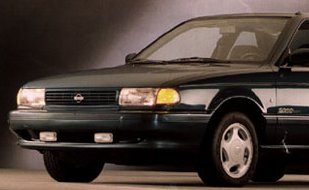
Photo from SE-R.net. |
| The Y10 wagon (and pickup): In Latin America and southeast Asia, there was the wagon built in Mexico for export that seems to share a lot of DNA with the B13 and its N14 cousins. Known as the Y10 platform, it was called the Tsubame in the Americas and the Wingroad or AD Wagon elsewhere. A pickup version of the Y10, called the AD Resort, was sold in the Phillipines. |
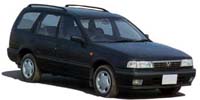
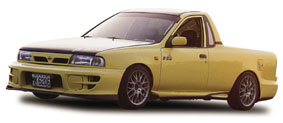
|
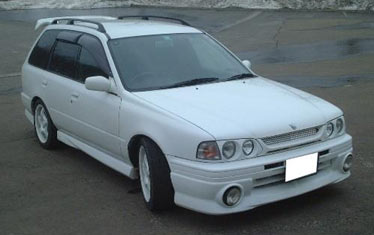 |
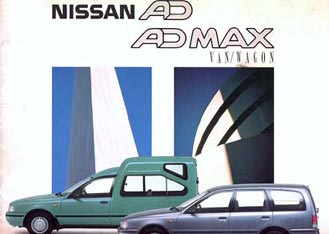 |
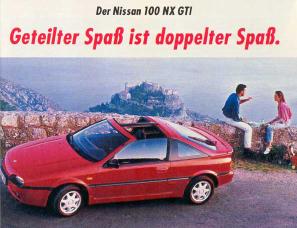
From a German print ad. |
World NX:
Though the B13 Sentra SE-R outnumbers its NX2000 brother in the United States, the NX has a much larger presence elsewhere. Australia had two SR20DE-powered NX Coupes - a basic model, and a NX-R with power accessories and the same body cladding and bigger brakes as the North American NX2000. In Japan, where the NX was built, the home market NX-Coupe was offered with the GA15DS, GA16DE, and SR18DE (see Brochure section). Perhaps the largest base of international support is in continental Europe, where the car usually sold as the 100NX. The largest range of exterior mods for the NX are in Europe, so 100NXen with wide offset rims and wild body kits aren't uncommon there. |